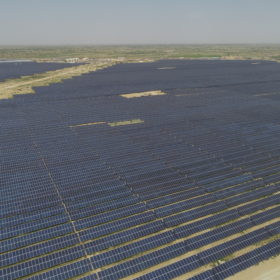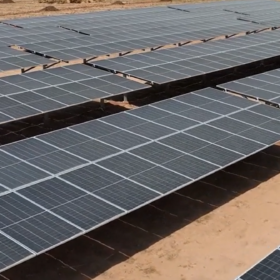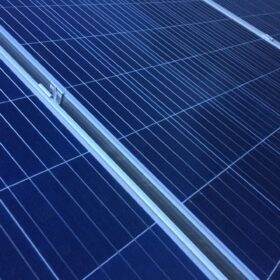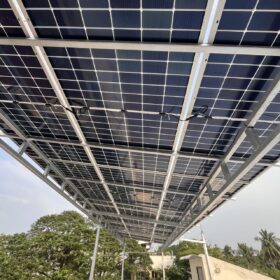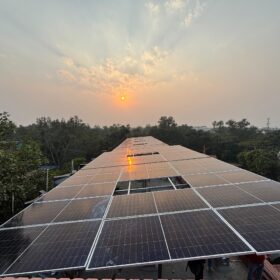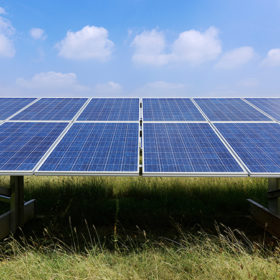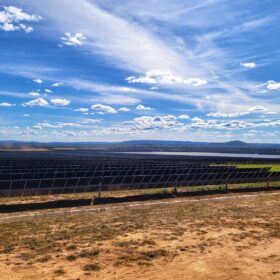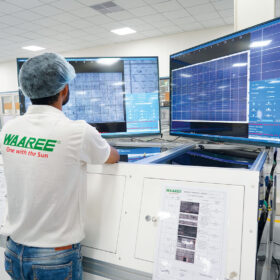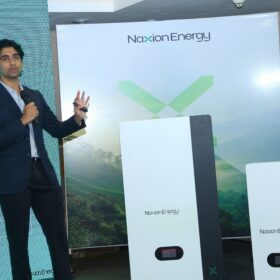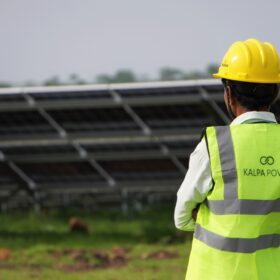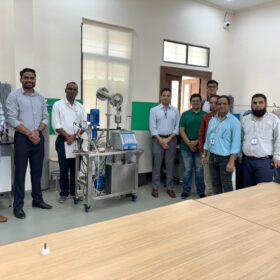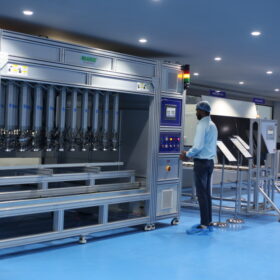India needs to invest $1.5 trillion by 2030 for climate action at scale: Deloitte report
The report highlights significant investment opportunities across renewable energy (solar, wind, hydro), bio-energy, energy storage solutions, green hydrogen and its derivatives, sustainable transport infrastructure, digital systems and platforms for climate action, sustainable agriculture, and circular economy and waste management.
Waaree Renewable Technologies Q1 profit surges 206.77% YoY to INR 86.39 crore
Waaree Renewable Technologies Ltd (WRTL), the solar EPC arm of Waaree Group, has reported a net profit of INR 86.39 crore for Q1 FY26, a 206.77% year-on-year (YoY) increase from the same quarter last year. The company’s revenue from operations stood at INR 603.19 crore, up 155.2% YoY from INR 236.35 crore in Q1 FY25.
Distributed solar poised to shape the next decade of India’s energy transition through residential, C&I rooftops, and hybrid microgrids
India has set an ambitious target of 280 GW of solar capacity by 2030, and of this, at least 40-45 GW is expected to come from distributed solar — a conservative estimate, considering the pace at which the ecosystem is maturing.
Mufin Green Finance raises $6.5 million from Developing World Markets to accelerate EV and clean energy financing in India
The funds will mainly be used for EV loans and leases, while also financing EV batteries, charging infrastructure, and solar panel installations for residential and commercial & industrial (C&I) projects.
Rotomag invests in Su-vastika
The strategic collaboration with Rotomag will equip Su-vastika with deep industrial expertise and robust manufacturing capabilities as it aims to scale clean, intelligent, and scalable energy solutions across India and global markets.
India achieves 50% clean power capacity five years ahead of target
As of June 30, 2025, India reached a cumulative installed power capacity of 484.82 GW with 242.8 GW coming from non-fossil fuel sources (8.8 GW nuclear, 49.4 GW hydro, and 184.6 GW renewable energy sources).
How homeowners in Tier 2 cities are switching to solar
Tier 2 cities are quietly powering a big shift in India’s energy landscape. What was once considered a technology for the rich or industrial use is now finding a place on the rooftops of everyday homes.
Meeting evening peaks with clean power requires a three-pronged strategy: IEEFA
The persistent evening peaks, which now nearly match daytime highs, reinforce the urgency of deploying storage solutions, demand-side measures and hybrid renewable projects to meet post-sunset demand.
Brazil may add 36.5 GW of solar by 2029, says grid operator
Brazil’s installed solar capacity is expected to rise from 51.7 GW in December 2024 to 88.2 GW by the end of 2029, according to the national grid operator’s 2025–29 Energy Operation Plan.
“Energy storage will account for half our business within three years”: Geon vice president
Khushi Kabra, Vice President–Strategy at Geon (formerly Battrixx), speaks to pv magazine on pivoting from electric vehicle (EV) batteries to building a strong foothold in the energy storage space.
